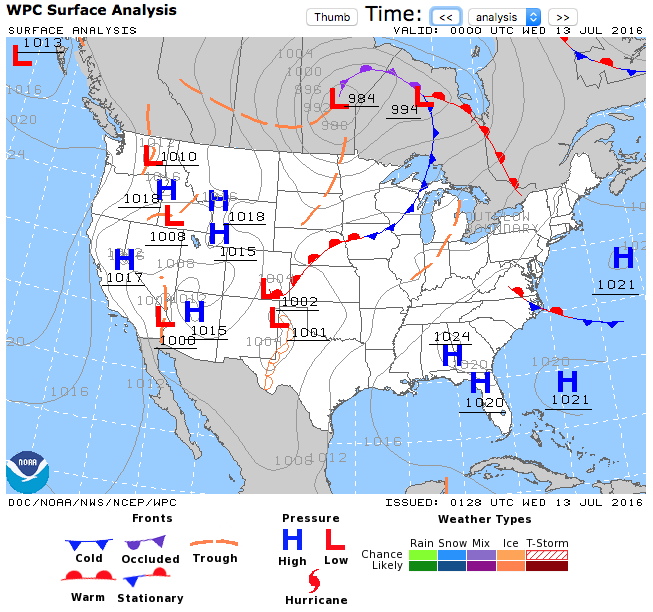Winds
Large winds are the main reason for hot air balloon flight cancellations. Here is some information on how these strong winds can negatively impact the whole flight process (inflation, mid-flight, landing).
Inflation:
Winds over 10 mph make it nearly impossible to inflate the hot air balloon with a fan, since the fabric of the balloon acts like a sail. It may become violent, thus posing as a hazard to those filling up the balloon.
Flight:
High winds will affect the balloon’s travel path and distance, and make it challenging to change direction during the flight. These winds also have potential to damage parts of the balloon.
During the day, surface winds increase as faster, upper wind begin mixing with the surface winds and make it unpredictable. The surface winds are broken up thermals (rising columns of warm air), making it difficult for pilots to control the balloon.

Retrieved Oct. 26, 2021 from:https://www.adventureballoons.co.uk/about/balloon-weatherLinks to an external site.
Landing:
Strong winds, specifically crosswinds, make it extremely difficult for the pilot to land. It can take the balloon over the target landing area, cause a rough landing, or require much more space. The winds could also blow the hot air balloon to areas that are unsuitable for landing, such as urban areas, over forests, or across bodies of water.
Winds Aloft:
Winds aloft are the winds up to 9,000 feet, and pilots need to examine these speeds to determine whether or not they will encounter wind shear or turbulence. To prevent accidents caused by these hazards, flights are canceled if they surpass 20 mph.
Thunderstorms
Flying a hot air balloon is very different from, and much more difficult than flying an aircraft in many ways, because it can not easily or quickly fly away from an approaching storm. Therefore, hot air balloons should not launch within 100 miles of an active thunderstorm.
Thunderstorms have invisible, horizontal airstreams from the base called outflows, which can have speeds of 30 to 40 mph. The balloons can not fly above these outflows. Gust fronts can also appear 100 miles in front of a line of storms, and these strong winds are too dangerous for balloon flight.
Rain from the storms cools down the hot air inside, meaning the pilot needs to frequently use the burner to keep the balloon flying and in control. Additionally, the heavy precipitation and lightning are both serious hazards as they may damage the balloon during the flight.

Retrieved Nov. 15, 2021 from: https://outdoortroop.com/hot-air-balloon-safety-statistics-how-safe-is-it-really/Links to an external site.
Visibility
Since hot air balloon pilots fly in VFR, low visibility conditions, such as heavy rain, mist, fog, low clouds, or even night time can make it challenging for pilots to operate the flight safely.
For example, the obscurations can prevent pilots from seeing obstacles such as power lines, buildings, or mountain ranges. To ensure a safe flight, visibility must be at least 1 to 3 miles.

Retrieved Oct. 27, 2021 from: https://www.itv.com/news/central/update/2012-03-26/air-balloon-crash-in-northamptonshire/Links to an external site.
Fronts
For a safe hot air balloon flight, fronts need to be avoided since it combines all the hazards listed above. Fronts indicate change in wind direction and stronger winds (wind shear). Similar to the strong wind hazard stated earlier, it is extremely difficult for pilots to control the balloon in the presence of increased wind speeds. With hot air balloons, it is also challenging to quickly fly away, around, or under the rapidly approaching front. Additionally, clouds, precipitation, and low ceiling associated with fronts decrease visibility for these VFR pilots, blocking their view and pose as a hazard.

Retrieved Nov. 17, 2021 from: https://www.eoas.ubc.ca/courses/atsc113/flying/met_concepts/03-met_concepts/03h-frontal_hazards/index.htmlLinks to an external site.
 icons at the top right corner of the subsection.
icons at the top right corner of the subsection.